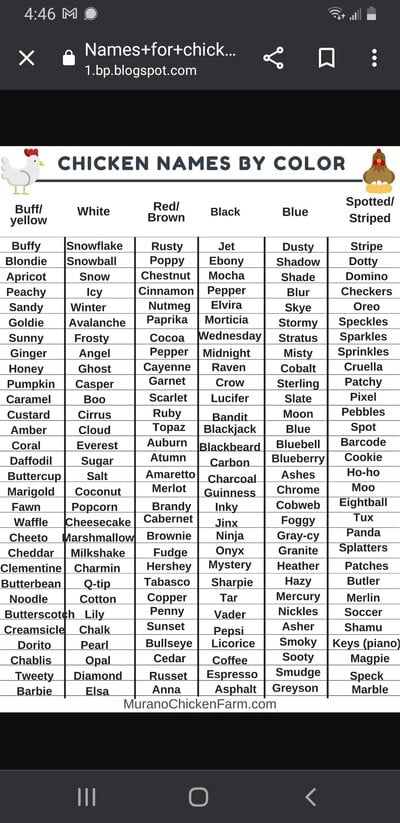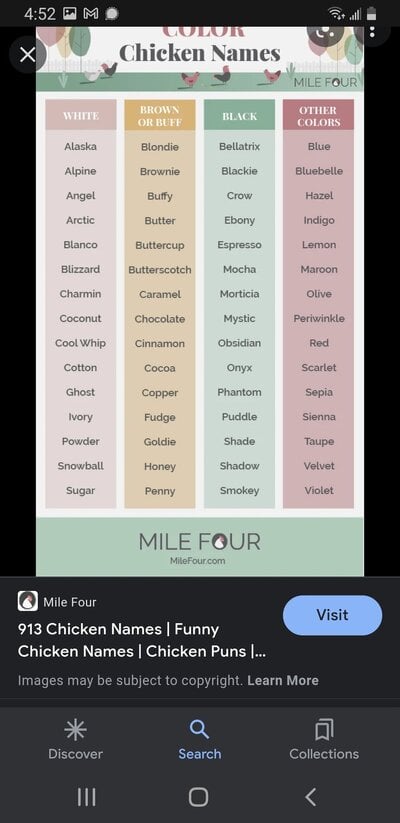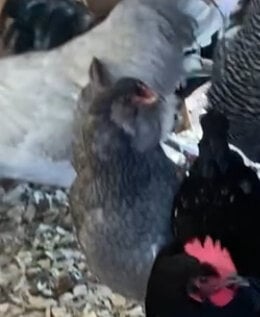RiDaGeckoGuy
Songster
I need name ideas for chickens I have 2 roosters and 8 hens I will list breeds below so far I have collected 8 eggs most barred rock and buff Orpington but one maran. My Easter egger is trying to lay and her babies will be olive eggers since she only lets my maran mount her and hates my Orpington roo. I will incubate Monday so there is a big variety I’ll get I’m on day two of collecting and leaving them unwashed on the counter. Here are the breeds and some egg pictures.
2 Barred Plymouth Rock hens, both laying, Sarah, 39 weeks old, and Hocus Pocus around 147 weeks
1 Dominque pullet, laying, Winifred, 39 weeks
1 Black Copper Maran rooster, mating, Hei Hei, 35 weeks old
1 Easter Egger pullet, laying, Jelly Bean, 35 weeks old
1 Lavender Orpington Roo, mating, Foghorn, 42 weeks old
1 Black copper Maran pullet, laying, Chungus, 42 weeks old
1 BCM mix pullet, laying, mother clucker,42 weeks old
1 Buff Orpington pullet, laying, Mrs. Priss, 39 weeks
1 Speckled Sussex pullet, laying, Mae, 39 weeks.

2 Barred Plymouth Rock hens, both laying, Sarah, 39 weeks old, and Hocus Pocus around 147 weeks
1 Dominque pullet, laying, Winifred, 39 weeks
1 Black Copper Maran rooster, mating, Hei Hei, 35 weeks old
1 Easter Egger pullet, laying, Jelly Bean, 35 weeks old
1 Lavender Orpington Roo, mating, Foghorn, 42 weeks old
1 Black copper Maran pullet, laying, Chungus, 42 weeks old
1 BCM mix pullet, laying, mother clucker,42 weeks old
1 Buff Orpington pullet, laying, Mrs. Priss, 39 weeks
1 Speckled Sussex pullet, laying, Mae, 39 weeks.







